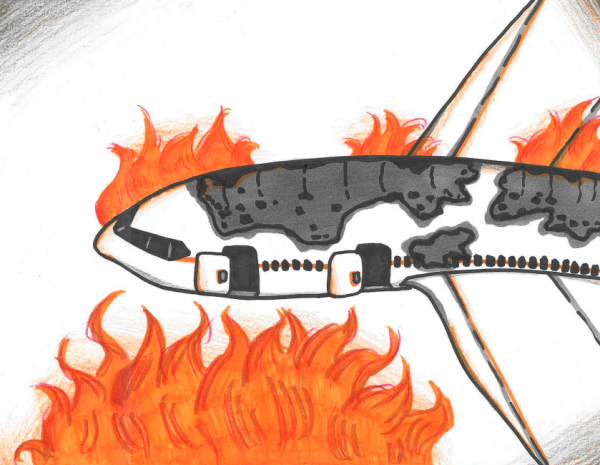CHHS launches new Pre-AP program
Pre-AP classes have always been exclusively for students interested in and ready to take on accelerated learning, but with recent implementations these prestigious classes are now open to all students, and some are even required.
In the past, pre-AP classes at Columbia Heights High School were not designed by College Board but instead meant to act as a type of Honors class to prepare the student for Pre-AP. This year marks the beginning of five new Pre-AP programs at CHHS, this time created by the College Board to specifically be a good precursor to future AP curriculums.
“The College Board decided a few years ago to figure out what Pre-AP meant so that Pre-AP in Texas has the same standards as Pre-AP in Minnesota,” College Board English Content Lead Georgia Scurletis said.
Last year, 100 schools across the United States applied to participate in a premier pilot program involving new Pre-AP classes like Art, Choir and Intermediate Algebra. This year, an additional 100 schools joined the program, and among them is Columbia Heights High School, one of two schools selected from Minnesota, with the other being Andover High School.
“By participating in the Pre-AP pilot we are fulfilling our mission of ‘providing a world of opportunities to all learners’ so that all students can form the foundation for their future,” CHHS Dean Ms. Carrie Trnjanin said.
Pre-AP classes are tailored to fulfill the College Board’s core principles of observation, questioning, conversation and writing. College Board is also the company that regulates and distributes both AP tests and curriculums along with the SAT. Pre-AP teachers at CHHS learned about the courses and principles at a conference in Chattanooga, Tennessee this past summer, and now this year, core classes like Intermediate Algebra, Geography and English 9 are strictly offered as Pre-AP courses.
“By placing everybody in Pre-AP classes, we give them the opportunity for acceleration,” math teacher Mr. Dan Ronchak said. “By having the experience of Pre-AP, the student can decide whether they want to move on to AP or ARCC.”
The new Pre-AP Intermediate Algebra course has replaced the general Intermediate Algebra class, and while it uses the same textbook and basics from the original course, it differs by providing new math problems that mirror the AP tests for Calculus and Statistics with algebraic content. Schools that started the program last year have also implemented a Pre-AP Geometry course this year.
“I visited two Intermediate Algebra classes and you could tell that the teacher had collaborated with each other because both classes were using the same worksheets,” Pre-AP implementation team representative Yvonne Mendolia said. “Collaboration is something we really encourage for our Pre-AP teachers.”
On the humanities end of the building, all freshmen are required to take Pre-AP English 9, of which 40 students have been selected for the rigorous Pre-AP Honors English 9 course. Pre-AP Honors English 9 is currently writing a literary analysis on “Of Mice and Men” by John Steinbeck, while students in Pre-AP English 9 are choosing their own book to read and study, within a certain criteria. Students in Pre-AP Honors English 9 also have less time to complete homework in class due to the increase in pacing.
“This opportunity is useful to the College Board as well because it will show if students respond well to the curriculum they have developed,” English teacher Ms. Minich said.
Some elective classes have also been promoted to Pre-AP status like Dynamix, taught by Mr. James Borsky, which now includes a deeper understanding of the music the choir sings and lessons in music theory. As a part of the curriculum provided by College Board, students are required to compose the chorus for a song.
“I think that the composition project is really fun and an interesting way to utilize my song writing skills with my classmates for a grade,” Brooke Edberg (12) said.
Other elective classes have also been created like Pre-AP Art, which is taught by Ms. Sarah Honeywell. The class covers many mediums like photography, sculpture and digital painting, culminating in the Sister Cities Art Show where students will compete for cash awards. The purpose of the course is to help students with future AP classes and college readiness. The semester-long course is recommended for those who have already taken an art class and know they are interested in the arts. However, the class also delves into how to use Adobe Photoshop and a DSLR camera, so no prior knowledge is necessary. The course requires students to write about the pieces they create too, including how and why they made it.
“In a lot of ways, what you learn in a Pre-AP Art class will translate really well to an AP English class, including studying, thinking and writing skills,” Ms. Honeywell said.
The last element of the pilot program revolves around the addition of the Pre-AP World History and Geography course, more commonly known at Heights as Pre-AP Human Geo. This course includes a quarter of geography and analyzing maps, followed by what used to be units one through three of the AP World History curriculum throughout the rest of the term.
This year, AP World History students are only studying the time periods from 1200 CE to the present. AP World History teacher Ms. Kristen Sinicariello said this is presenting a challenge for the transition because this year’s students have not learned about the information presented in Pre-AP Human Geography and might struggle with the current curriculum without that background knowledge. The AP World History class will still be taking the usual AP test, but if the College Board decides they like this program, they will be implementing this system throughout the United States and changing the AP World History test to include only the later information.
The Pre-AP World History and Geography class has combined and replaced the Pre-AP Civics and Pre-AP Geography classes. Civics is now exclusively offered as a required general course to make sure students are not overloaded by the amount of Pre-AP classes. Pre-AP Human Geo now covers the required geography credit.
In the next year, these courses will be available to schools all around the country and will be able to implement this program with the intention to help improve confidence in their students’ ability to learn and engage in their work.
“With our expansion, we hope to give more opportunities for teachers to feel supported in meeting their students where their learning can happen,” Associate Director of Pre-AP Implementation for the College Board Ashley Garner said.
These courses practice taking AP quizzes throughout the course. The new English classes, along with Pre-AP World History and Geography, also use College Board-provided working texts, which include short stories and maps respectively.
“We like to call it a working text rather than a workbook because the texts are there for students to interact with and dive deeper into not just to fill out answers,” College Board Pre-AP implementation team member Danny Millett said.
As a part of the Pre-AP pilot program freshman students will be taking the PSAT twice, once in the fall and the other in the spring while the juniors take the SAT. This will help the College Board determine the effectiveness of their program. This also helps students prepare for the SAT, which has replaced the in-school ACT test.
“We moved toward the SAT because of our partnership with the College Board and their affiliation with Pre-AP and AP curriculums,” Assistant Principal Mr. Matt Miller said. “They also provide free resources for us to help teach students.”
Through this opportunity, both CHHS and the College Board are learning what is possible to proficiently prepare students for college and beyond.

Molly Wilson is a Senior at CHHS. This year she is the News Editor for the Heights Herald. Molly went to Twin Cities German Immersion School where she...







